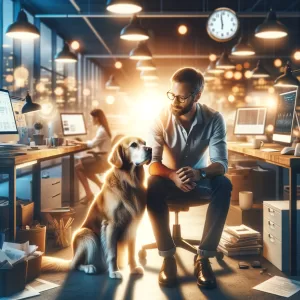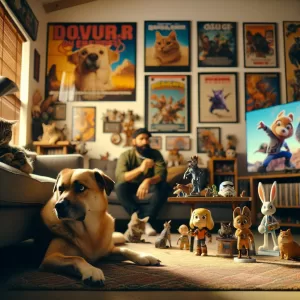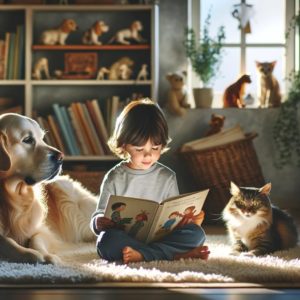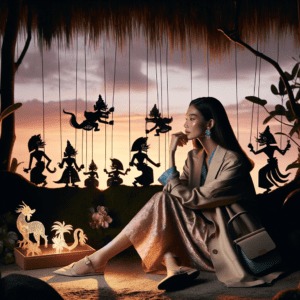Our journey through history often features great wars, famous leaders, and important discoveries. But there is an often-overlooked yet universal story that we all share: the evolving relationship between humans and our domestic pets. From the first wolf that crept closer to a human campfire to the pampered Persian cat purring on a silk pillow, pets have become integral parts of our lives and our history. This blog post will weave through the fascinating tale of how domestic pets have evolved over time, transforming from practical work animals to beloved companions, and eventually to members of our family.
Prehistoric Beginnings – Domestication Out of Necessity
Around 15,000 years ago, at the end of the last Ice Age, the first known instance of animal domestication took place. It was not a mere moment of whimsy that brought animals closer to humans; instead, it was a survival strategy, a necessary pact. Archaeological evidence suggests that it was the gray wolves, the distant relatives of today’s domestic dogs, that first forged this bond with us. They were likely attracted to the leftovers from human hunts, and gradually a mutually beneficial relationship was formed. Wolves helped humans by guarding their camps and assisting in hunts, and in return, humans provided them with food and protection.
The Ancient Era – Pets as Symbols and Companions
In ancient civilizations, pets began to assume new roles beyond just practical ones. They were seen as companions, status symbols, and even spiritual entities. Egyptians revered cats and often associated them with goddesses like Bastet. Dogs, too, were prized for their loyalty and protection, often shown in artwork and sculptures of the era. In Ancient Rome, birds and fish began to be kept as pets, a testament to the expanding definition of companionship. These societies set the stage for our modern-day relationships with pets, highlighting the intrinsic emotional bond between humans and animals.
Medieval to Modern Times – Status, Luxury, and Companionship
The evolution of pets took another significant turn in the Medieval period and into the Renaissance. Dogs were no longer just working animals; breeds were developed specifically for their looks or their companionship traits. Lapdogs became a symbol of wealth and status. Cats, too, were favored for their ability to control pests, and their mysterious allure. Birds, rabbits, ferrets, and even exotic pets like monkeys were cherished by those who could afford them. The period was characterized by an increasing appreciation for animals as companions rather than just utilitarian members of the household.
The 20th Century and Beyond – Pets as Family Members
In the 20th century, especially in the post-World War II era, pets began to be seen as integral family members. Increased living standards, shorter work hours, and the rise of suburban living meant that people had more time and resources to dedicate to their pets. Advances in veterinary medicine and pet food also contributed to pets living longer and healthier lives, strengthening the bond between pets and their owners. Today, pets are often treated as full-fledged family members, with their birthdays celebrated, their health meticulously cared for, and their loss deeply mourned.
Our Unbreakable Bond with Pets
The historical journey of domestic pets is fascinating not just for the evolution of the animals themselves, but for what it reflects about our own human story. Our relationship with pets mirrors our societal changes, technological advances, and shifts in emotional landscapes. From wolves around a fire to pampered pooches in doggie daycares, the story of domestic pets is a tale of friendship and love that transcends species and time. As we continue into the future, it’s certain that our bond with our pets will continue to evolve, but the love we share will undoubtedly remain the same.








